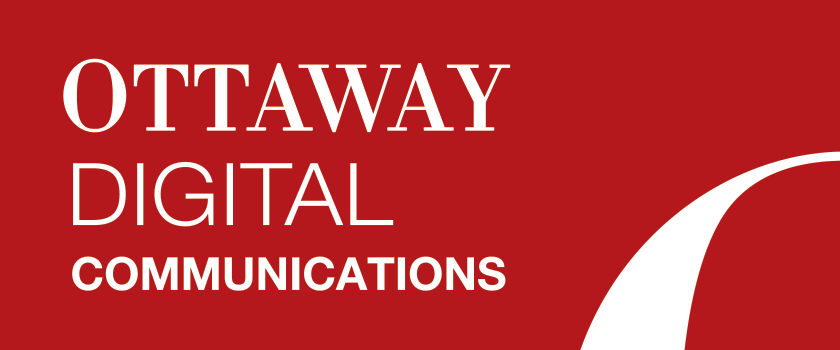Digital Advertising Terms
- Adwords
(Google): - Google’s main advertising product and main source of revenue. Google’s total advertising revenues were USD $28 billion in 2012. AdWords offer, pay per click, i.e., cost-per-click (CPC) advertising, cost-per-thousand-impressions or cost-per-mille(CPM) advertising, and site-targeted advertising for text, banner, and rich-media ads. The AdWords program includes local, national, and international distribution. Google’s text advertisements are short, consisting of one headline consisting of 25 characters and two additional text lines consisting of 35 characters each. Image ads can be one of several standard sizes.
- B2B:
- B2B, or Business-to-Business, defines a business, often a web site, targeting other commercial entities rather than consumers. B2B web sites tend to generate significantly higher ad revenues that strictly consumer-oriented sites. Internet Ad Sales is a B2B web site, as the main target audiences of this site are professional, commercial web publishers and advertisers.
- Banner Ad:
- Banner and banner ad are generic terms describing the most common forms of online advertising, the 468×60 image or rich media ad displayed at the top of many commercial web sites.
- Campaign:
- A specific coordinated advertising effort on behalf of a particular product or service that extends for a specified period of time.
- Click-Through Rate
(CTR): - CTR, or click-through rate, is the rate at which visitors click an advertisement, usually calculated as a percentage of ad impressions.
- CPC:
- A performance-based pricing model for advertising sales, CPC, or cost per click pays publishers based on number of clicks on a specific ad. Most ad networks, logically enough, only pay once per click per user within a specified time period, generally 24 hours or more.
- Inbound Marketing:
- Inbound Marketing is marketing focused on getting found by customers.
In traditional marketing (outbound marketing) companies focus on finding customers. They use techniques that are poorly targeted and that interrupt people. They use cold-calling, print advertising, T.V. advertising, junk mail, spam and trade shows.
Technology is making these techniques less effective and more expensive. Caller ID blocks cold calls, TiVo makes T.V. advertising less effective, spam filters block mass emails and tools like RSS are making print and display advertising less effective. It’s still possible to get a message out via these channels, but it costs more.
Inbound Marketers flip outbound marketing on its head.
Instead of interrupting people with television ads, they create videos that potential customers want to see. Instead of buying display ads in print publications, they create their own blog that people subscribe to and look forward to reading. Instead of cold calling, they create useful content and tools so that people call them looking for more information.
- Landing Page:
- A landing page is the advertiser’s web page to which a user is directed after clicking an ad. For affiliate, CPL and CPA sales, it is important that the landing page is one which entices users to immediately purchase a product or service, rather than simply the home page of the advertising site.
- Rate:
- A charge for advertising media space or time.
- Rate card:
- A printed listing of advertising rates for a single media vehicle.
- Reach:
- The total audience that a medium actually reaches; the size of the audience with which a vehicle communicates; the total number of people in an advertising media audience; the total percentage of the target group that is actually covered by an advertising campaign.
- SEO
(Search Engine Optimization): - The process of affecting the visibility of a website or a web page in a search engine’s “natural” or un-paid
(“organic”) search results. In general, the earlier(or higher ranked on the search results page), and more frequently a site appears in the search results list, the more visitors it will receive from the search engine’s users. SEO may target different kinds of search, including image search, local search, video search, academic search, news search and industry-specific vertical search engines. - SEM
(Search Engine Marketing): - A form of internet marketing that involves the promotion of websites by increasing their visibility in search engine results page(SERPs) through optimization (both on-page and off-page) as well as through advertising (paid placements, contextual advertising, and paid inclusions). Depending on the context, SEM can be an umbrella term for various means of marketing a website including search engine optimization (SEO), which adjusts or rewrites website content to achieve a higher ranking in search engine results pages, or it may contrast with pay per click
(PPC), focusing on only paid components. - Schedule:
- A list of advertisements or media to be used in a campaign; a chart of the advertisements that have been planned.
- Sponsorships:
- Sponsorships, as opposed to traditional ad display, generally occur when an advertiser pays to advertise on all or most of a specific section of a website or email newsletter. Advertisers usually prefer the sponsorship model when a website offers content related to, but not competitive with, the products or services offered by the sponsoring company. A sponsorship may take the form of traditional advertising banners, integrated sponsored content, text messages(“this section sponsored by…”) or the like.
- Target group:
- Those persons to whom a campaign is directed; those individuals with similar characteristics who are prospects for a product or service; also called “consumer profile.”
- Title Tag:
- Descriptive text on a web page.
- Traffic:
- Just as it sounds, traffic refers to the rate at which a site is visited. The term is general, but the best true measures of traffic are calculated in terms of unique visitors and page views.
- Visits:
- A visit is a series of requests from the same uniquely identified individual (a visitor) in a set period of time. A visit is made up of several hits and page views and often shows a track through a site.
Visits are usually defined as a set period of time, typically 24 hours or 1 hour. For example, if you go to a certain site 3 times in the same day, if their visit period is 24 hours, your 3 page views will be ascribed to 1 visit. But if their visit period is 1 hour, and you visited in 3 different hours, your page views will be logged as 3 different visits. It’s important to know what the log analysis software defines as a visit period.
Visits are calculated by setting a cookie or web bug on the customer. Some Web analytics packages will calculate visits based on Web logs, without setting a cookie, but these, while useful, are not going to be as accurate as the cookied method. Because of dynamic IPing and other anonymizing techniques, non-cookied visits are based on educated guesses.



